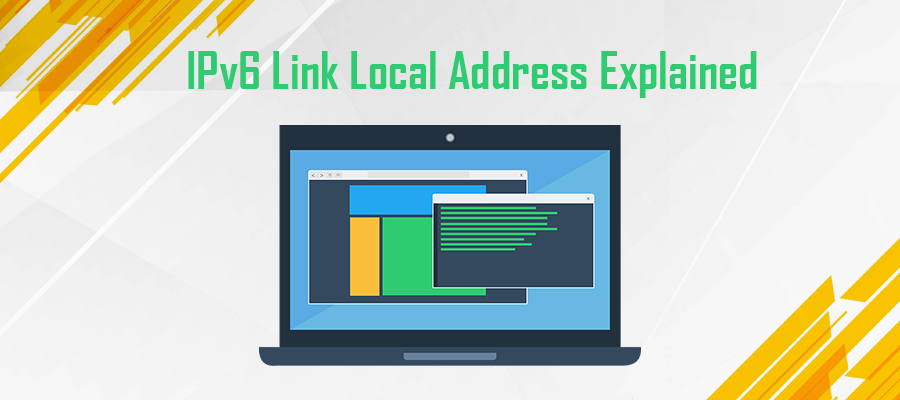 As the demand for technology rapidly evolves, so must the infrastructure powering our digital world. When you think about next-generation tech, images of indescribable advancements likely fill your mind.
As the demand for technology rapidly evolves, so must the infrastructure powering our digital world. When you think about next-generation tech, images of indescribable advancements likely fill your mind.
While this is mostly true, especially when it comes to deep-level computing, some of the most dynamic evolutions are stimulated not by newness, but by reactivating antique structures.
Few situations highlight this truth as strongly as the implementation of IPv6, which is also known as Link Local Address.
Although IPv6 was originally developed and released during the tech-boom of the 1990s, its use is just now starting to gain the attention of developers and programmers.
Interestingly, IPv6 Link Local Address has been actively utilized since its creation, its capabilities and functionality has only garnered attention throughout the last couple of years.
Regardless of your interest or experience in computer networks and backend infrastructure, understanding the role and potential of this widely used network configuration is paramount.
To help explain the use of IPv6 Link Local Address, it’s best to start at the beginning and work your way into more advanced topics. As with all network configurations, the current and future use of IPv6 is poised to evolve. However, the power and potential of this evolution solely depends on the widespread understanding of its baseline functions.
What is a Link Local Address?
Before diving into the specifics of this configuration, it’s important to first understand what a link local address is and why it’s used in modern connectivity.
In the most simplified definition, a link local address is a sequence of numbers (or a network address) that’s utilized only within the confines of what’s known as a network segment, also simply referred to as a “link.” This network address may also be used within a broadcast domain that connects a host computer.
Unlike a standard IP address, a link local address isn’t universally unique, which basically means its numerical sequence may be identical to another address found outside of its assigned network segment.
One of the fundamental uses of a link local address is to provide an IP address to a machine on a specific network that hasn’t been automatically or manually configured.
What is an IPv6 Address?
If you’re familiar with a standard IP, or Internet Protocol, address then you already have a baseline understanding of this unique numerical address configuration.
IPv6 stands for Internet Protocol Version 6, and as stated above, is used as an identifier for a machine connected to a link (network segment) that utilizes IPv6 configurations.
One of the most notable differences between IPv6 and the more familiar IPv4 configuration is its bit value. While IPv4 features a 32-bit value, IPv6 offers a staggering 128-bit value.
The numerical sequence, or address format, of an IPv6 address is assigned by machine-network communication. The requesting machine sends what’s known as an ARP (Address Resolution Protocol) signal that’s received by other machines connected to the network segment.
Essentially, this machine rapidly generates a random address sequence. In the most basic of explanations, if this address isn’t used by another machine within the network segment, it’s assigned to the requesting device.
However, if the randomly generated address is already assigned, another randomly chosen address is sent out. This process continues until a fully unique address is identified. This process is known as stateless address autoconfiguration. Of course, a network administrator can also manually assign an IPv6 address to a machine.
Can IPv4 Communicate with IPv6?
A common misconception among those who are new to the concepts of IPv6 is that they must switch their entire network to adhere to this configuration. As network configurations have become a specialized subset of technology, many people are unaware that multi-protocol communication has been happening almost since the beginning.
In many ways, a good portion of network configurations are bilingual. That is to say, networks have the potential to understand and communicate with a variety of protocols.
However, this all depends on whether each protocol, also known as a “node,” share the same protocol. When it comes to IPv4 and IPv6, they share a variety of traits. Yet, they are two completely different network-layers featuring unrelated packet formats and addressing characteristics.
To put it in a simple way, neither protocols can communicate with each other if they’re designed to solely “speak” their native language. Ergo, an IPv6-only nodes only work with other IPv6 nodes. But, as with almost any other technological element, there are exceptions to every rule. For example, IPv6-only nodes can connect to IPv4 nodes via what’s most easily described as IP cloud-based solutions, such as IPv4 as a Service.
These services are essentially digital translators capable of translating the unique language of one node to the wholly different language of another without the risk of unsavory consequences other translation technologies carry.


